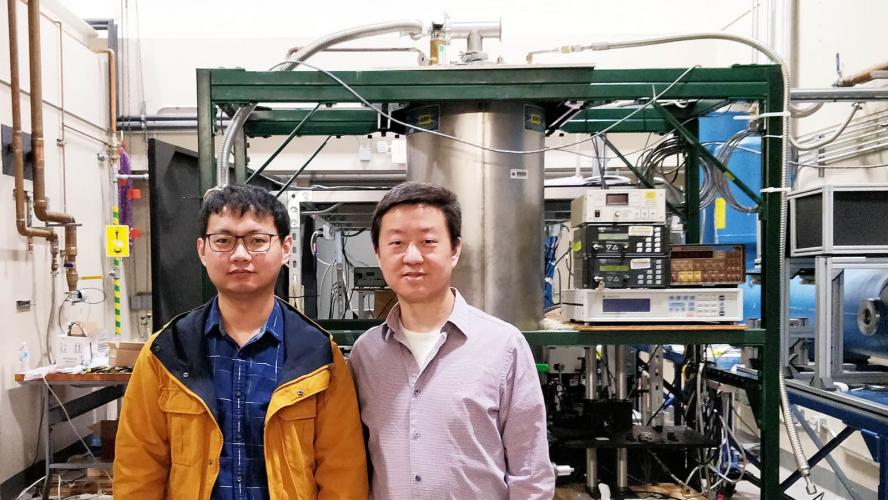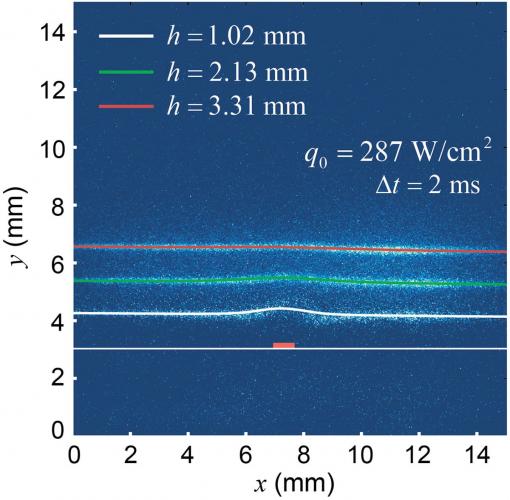Earlier this month, the International Institute of Refrigeration (IIR) announced the winners of the IIR scientific awards. Shiran Bao, Ph.D., a postdoctoral researcher at the cryogenics lab at the National High Magnetic Field Laboratory, has been selected as the winner of the prestigious Peter Kapitza Award. The award will be conferred at the 25th IIR International Congress of Refrigeration (ICR) in Montreal, Canada, in August 2019.
Every four years during the IIR International Congress of Refrigeration (ICR), the IIR offers a series of prestigious academic and scientific awards that recognize those who have made outstanding contributions to the field of refrigeration or who have completed noteworthy research. Peter Kapitza Award is one of the eight IIR Young Researchers Awards, established in 1989, for outstanding research specifically in the field of Cryophysics.
Bao joined Prof. Wei Guo’s cryogenics group in 2017 after he received his Ph.D. in Refrigeration and Cryogenic Engineering from Zhejiang University in China. His research at the cryogenics lab focuses on developing molecular-tagging based flow visualization techniques in cryogenic helium and the relevant applications to various practical engineering problems. One aspect of Bao’s recent work is the development of a novel flow-visualization based quench-spot detection method for superconducting radio frequency (SRF) cavities.

Many modern particle accelerators utilize SRF cavities, cooled by superfluid helium-4 (He II), to accelerate particles. The maximum accelerating field is limited by cavity quenching caused by Joule heating from tiny surface defects. Locating these quench spots and subsequently removing the defects can improve the maximum field and hence allow for better accelerator performance and cost reduction.
A widely adopted method at accelerator labs is based on triangulation of temperature-entropy waves (i.e., the so-called second-sound waves) in He II emitted from the quench spots. However, a mystery has been observed for decades that in order for the triangulation to converge, a second-sound speed higher than literature values is required. In a proof-of-concept experiment, Bao used a miniature heater mounted on a plate to simulate a surface quench spot. He then created a He2 molecular tracer line nearby the heater using laser-field ionization in He II. This tracer line deforms due to the heat flow in He II. By analyzing the tracer-line deformation, Bao showed that the heater location can be reproduced within a few hundred microns, which significantly advances the state-of-the-art of cavity diagnostics.
His analysis also uncovered important physics for solving the decades-long puzzle underlying the operation of second-sound triangulation cavity diagnosis. He found that the heat transported in He II is only a small fraction of the total input heat. The remaining heat energy is consumed in the formation of a cavitation zone near the heater. By analyzing the size of this cavitation zone, Bao and Guo proposed a model that can quantitatively explain the fast second sound evidenced in those triangulation experiments. This research is published in Physical Review Applied.
The work is supported by U.S. Department of Energy under Grant No. DE-FG02-96ER40952. The experiment was conducted at the National High Magnetic Field Laboratory, which is supported by National Science Foundation Cooperative Agreement No. DMR-1644779 and the State of Florida.



